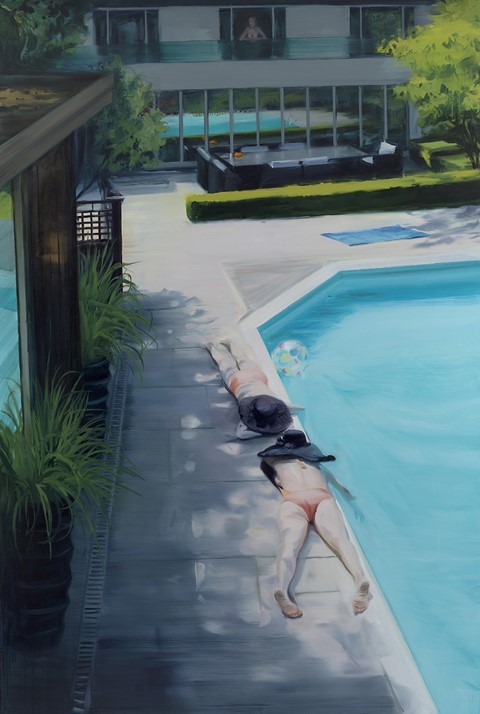We take a look at Caroline Walker's new exhibition.
Yesterday marked the opening of the first public solo exhibition by talented figurative painter Caroline Walker at PM (Pitzhanger Manor) Gallery. Entitled In Every Dream Home, after the Roxy Music song, the display centres around a number of female protagonists engaged in a variety of tasks – from sunbathing to housework – and pictured in luxurious domestic settings.
At first the works appear delightfully appealing in their architectural splendour and depiction of dreamy, Hockney-esque swimming pools. Yet one frequently gets the impression that something unusual, and occasionally sinister, is afoot – the product of a pervading sense of film-like drama that leaves you wondering who exactly these women are and whether things are in fact as perfect as they seem. Walker's working method was similarly directorial: she sought out real and interesting locations (including a converted 1950s petrol station in Berlin), as well as costumes, props and a cast of models, and carried out photo shoots from which she then painted the final pieces in her London studio. "Since representational painting is already such a space of construction and illusion, the process itself just seems to compound the fiction," she explains.
Here, we catch up with Walker to discuss the reasons behind her specifically female characters, as well as her varying influences, and her own idea of a "dream home" in line with AnOther's home themed spring/summer issue.
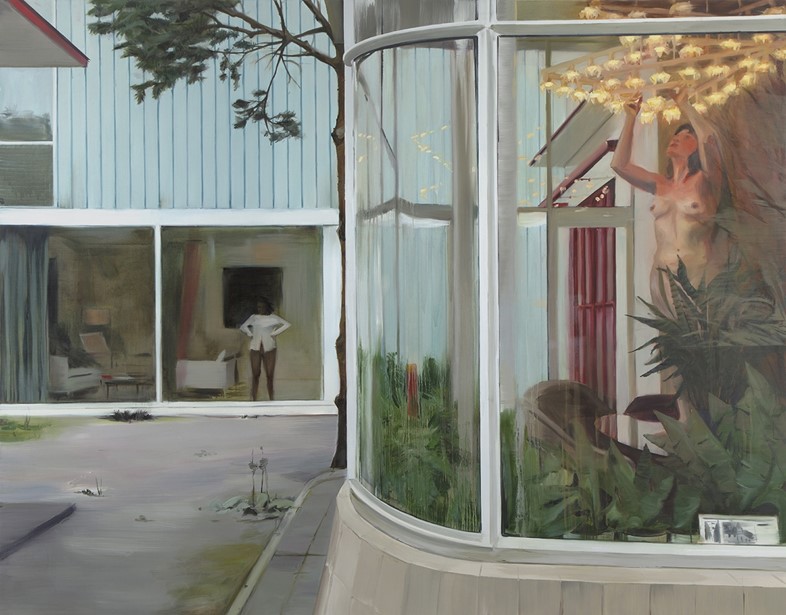
What sparked the idea for the In Every Dream Home project?
I’ve been working with the subject matter of the human figure in relation to architecture, and specifically women in domestic space, for nearly 10 years now, though gradually over the last few years the locations I use have become increasingly glamorous. I’d been exploring the notion of the "Grand Design" house and became interested in the idea of dream homes, and what might go on in them. Pitzhanger Manor itself was built as something of a “dream home” for John Soane and his family, though unfortunately this didn’t come to fruition in the way he’d hoped.
The title for the exhibition is inspired by the 1973 Roxy Music song In Every Dream Home a Heartache which is about our obsession with material wealth and how this is ultimately empty: we might appear to have a perfect life, but things are never that simple. This idea is characterized by the relationship between the narrator and a mail-order inflatable sex doll, his "disposable darling" – a facsimile of a real woman who resides in the distorted doll’s house of a dream home. Like a dream-home lifestyle, the doll itself embodies fantasy and artifice. This struck a chord with me in the way I populate my paintings with alienated, nameless women, often in states of undress, available for our projected fantasies, sexual or otherwise.
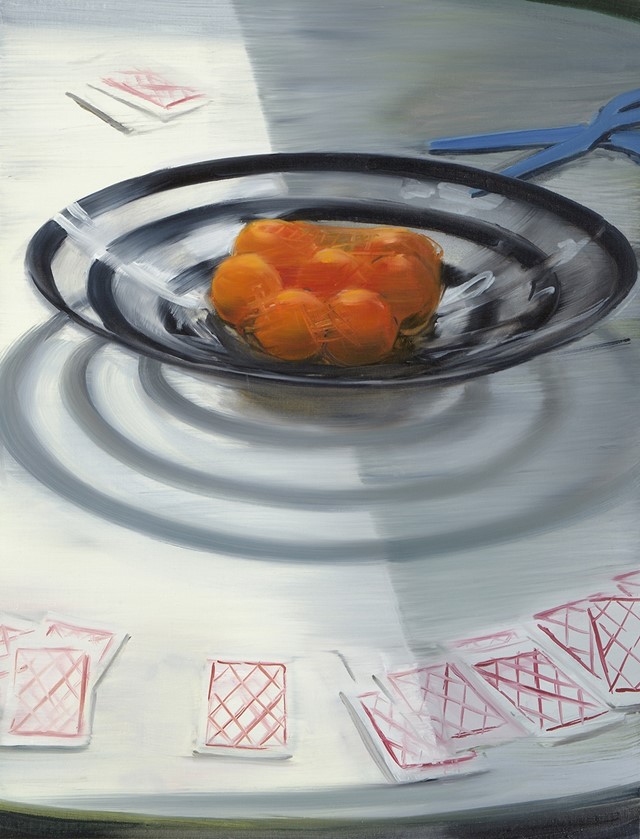
Did you have any specific references or influences in mind when you began?
I’ve always really liked Hockney’s pool paintings from the 60’s, Eric Fischl’s paintings of suburban America and had recently come across Larry Sultan’s photographic series The Valley, which shows scenes from porn sets in the San Fernando Valley. There’s something about the banality and boredom of domesticity mixed with the voyeurism and eroticism in all of these works which intrigues me, and which seemed like an interesting starting point for me when I was thinking about making a series of paintings with this outdoor pool which features a in the show.
Why did you choose to depict women specifically?
My female subjects inhabit different archetypes both in the home, such as the housewife, cleaner, house sitter or intruder and wider female archetypes such as the witch, femme fatale, mother, and many others. With a number of the paintings in this exhibition I was exploring the pagan idea of the triple goddess: Maiden, Mother, Crone which are these 3 stages of woman. That’s why the recurring women in these paintings are seen repeatedly in the matching swimming costumes, as though we could be looking at several stages of the same women.
I’ve always been interested in the proliferation of images of women throughout the history of western painting, and it makes sense for me to focus on this in painting from a contemporary female perspective. In a broad sense my work is exploring pre-conceived gender and identity positions in relation to the home, but I paint women because in some ways I am always painting myself, and my own experiences or anxieties, but from a distanced objective position which can hopefully also reflect how we all encounter the world.
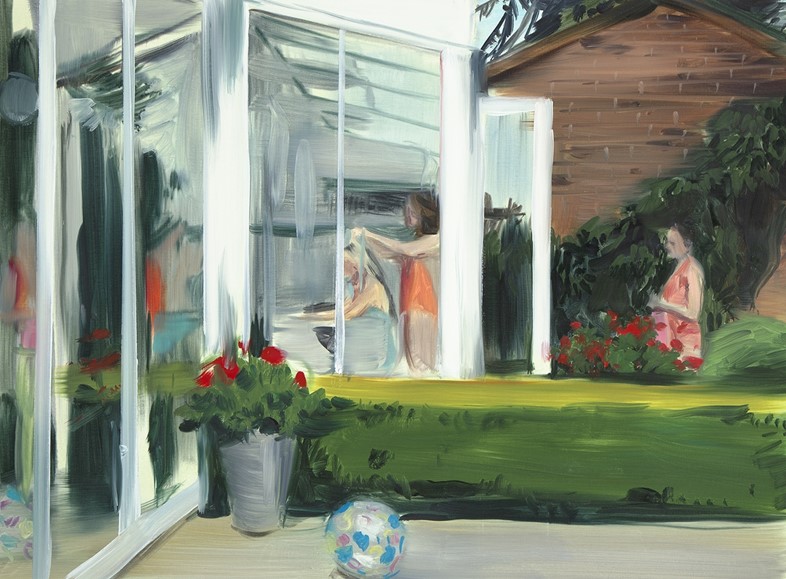
What do you hope people will get from the series?
I hope it will make people reconsider what initially could appear a very inviting scenario being portrayed and think about how they might view a place like that, who they think the people are and why.
You’ve mentioned film influences like Lynch and Hitchcock – what elements from their work did you look to carry across into your own?
I think it’s that space that both Hitchcock and Lynch achieve between the banal or familiar and the threatening. They both use visual signifiers very effectively as well – recurring colour motifs in the character’s clothing or environment for example which re-enforce an overarching atmosphere seem very painterly, and is definitely a strategy I use when working in series.

Where do you feel most at home?
Probably at my family home in Scotland, where my parents have lived since before I was born. It looks a bit like a Victorian dream home: it’s white with a turret in the middle. So perhaps that’s where my interest in the dream home stems from.
What is your “dream home”?
I’ve only ever lived in Victorian period buildings so I think my attraction to these very minimal Neo-Modernist houses is because they’re so far away from my own experience of domesticity. They really are fantasy spaces for me. I like the idea of living in one, but unfortunately I’m not very good at being minimal. I’d definitely like the outdoor pool though.
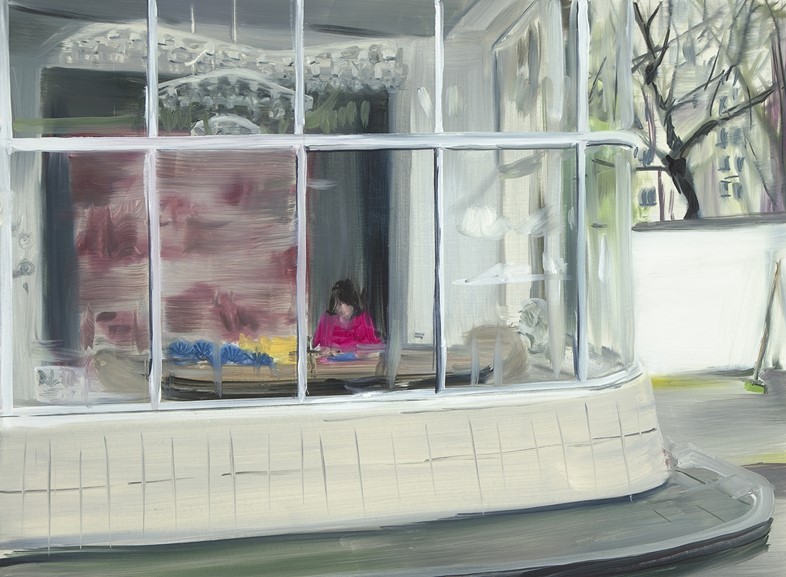
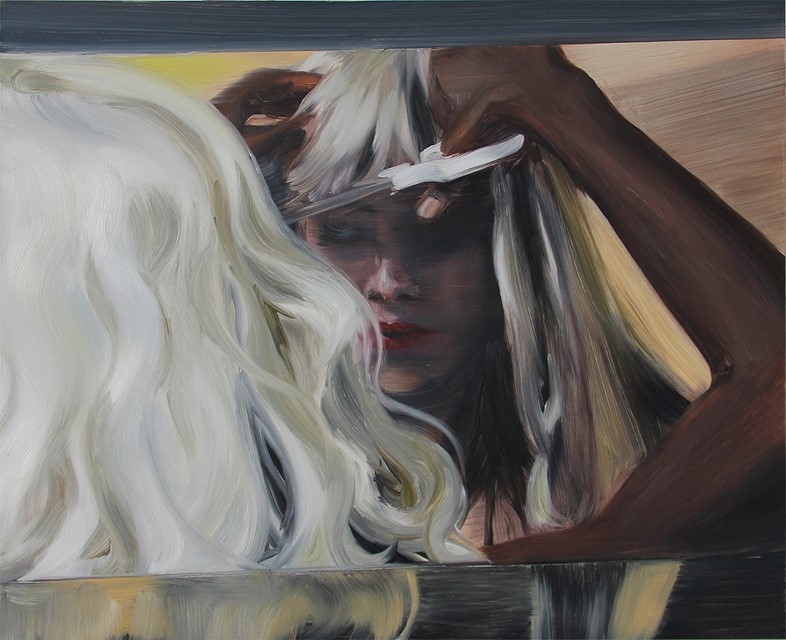
In Every Dream Home by Caroline Walker is currently on display at the PM Gallery and runs until September 8 2013. Entry is free.
Text by Daisy Woodward
